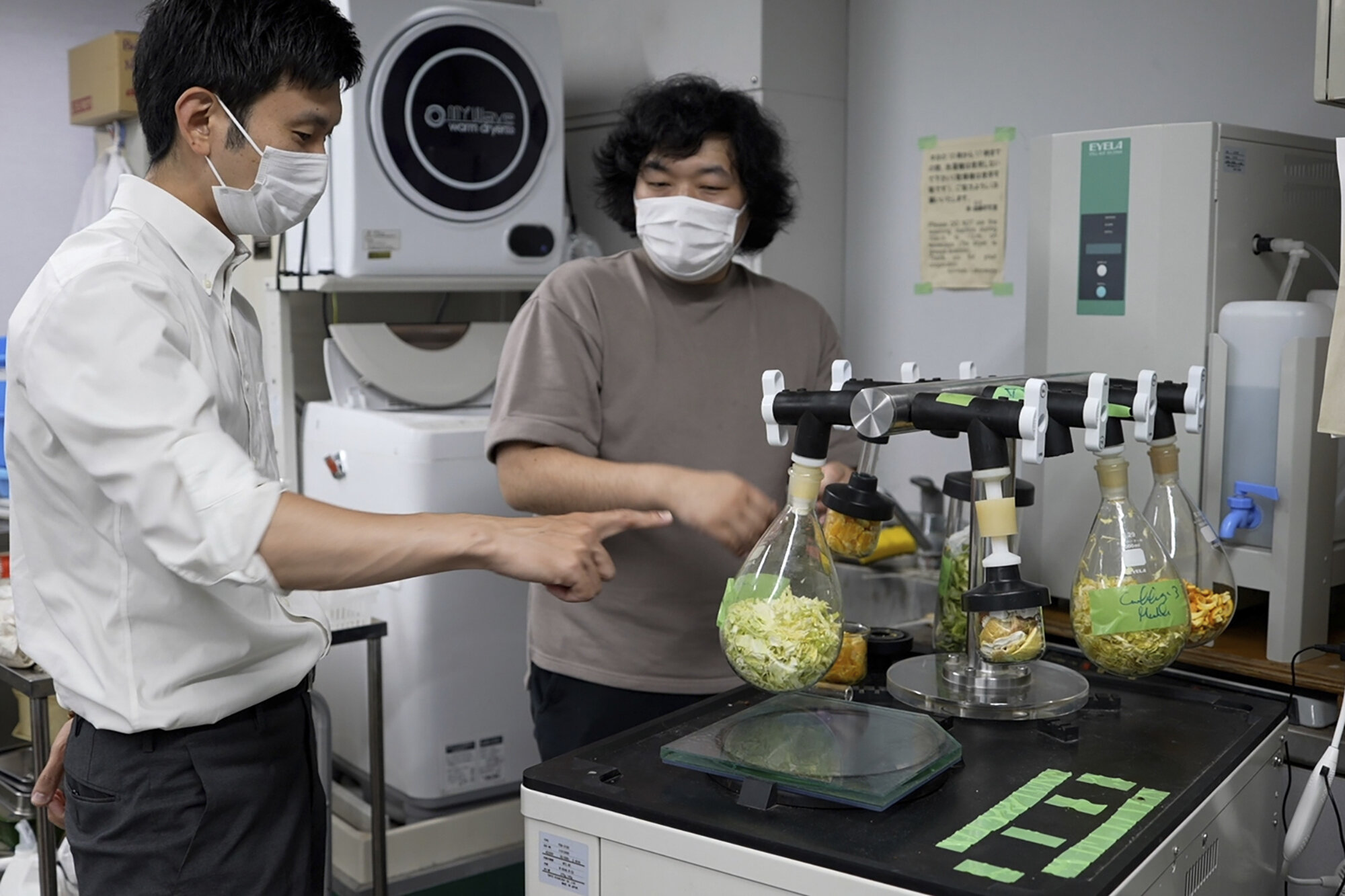University of Tokyo researchers Yuya Sakai, left, and Kota Machida, right, check dried vegetables and fruit peels before pulverizing them into particles at their university laboratory in Tokyo, May 26, 2022. The researchers from the university have developed a technology that can turn waste food into “cement” for construction. Credit: AP Photo/Chisato Tanaka
Have you always dreamed of having a gingerbread house like Hansel and Gretel?
In the near future, edible houses may no longer be just for fairy tales.
University of Tokyo researchers Kota Machida and Yuya Sakai have developed a technology to turn food waste into potentially edible “cement” for construction.
It is the first process in the world to manufacture cement entirely from food waste. The researchers claim that the tensile or flexural strength of their product is almost four times that of ordinary concrete.
Machida and Sakai say they hope to help reduce global warming, by alleviating problems with food waste that emits methane as it rots when buried in landfills.
Sakai, an associate professor of industrial sciences, developed the technology while researching sustainable materials that could replace cement-based concrete. Cement production accounts for 8% of global carbon dioxide emissions, according to think tank Chatham House.
He first developed a way to make concrete by subjecting pulverized wood particles to thermal compression. The three-step process of drying, pulverizing and compressing was done using simple mixers and compressors that the researchers say can be purchased on Amazon.
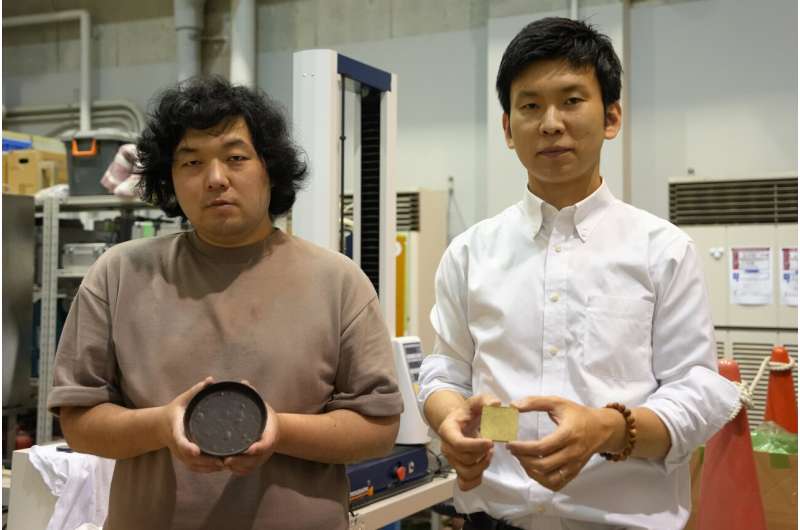
University of Tokyo researchers Yuya Sakai, right, and Kota Machida pose for photos with products they made from “food cement” in their laboratory in Tokyo on May 26, 2022. Sakai and Machida have developed technology that can turn food waste into “cement” for use in construction. Credit: AP Photo/Chisato Tanaka
Sakai, along with his student Machida, decided to do the same with food scraps. Previous trials using food scraps to make cement required mixing plastics to make the materials stick together.
After months of failures, they realized they could make the cement bond by adjusting the temperature and pressure used.
“The hardest part was that each type of food waste requires different temperatures and pressure levels,” Sakai said.
Other experiments in the use of food waste in construction have mainly focused on the use of materials such as coffee grounds or bio-waste ash as a filler in ordinary concrete.
Sakai and Machida say they have successfully made cement using tea leaves, orange and onion peels, coffee grounds, Chinese cabbage and even leftover lunch boxes.
They tweaked the flavors with different spices and discovered that the colors, smell and taste of cement can be very appealing. To be able to eat the material, a person would have to break it into pieces and boil it, Sakai said.
-
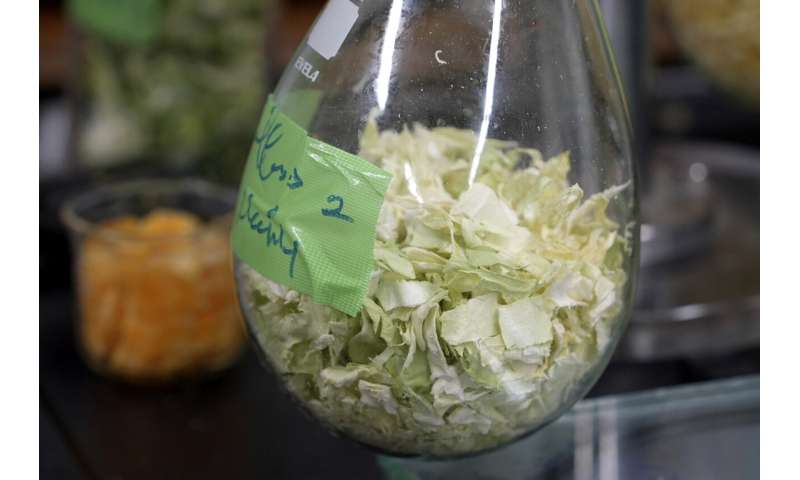
Dried Chinese cabbage is seen in a glass bottle at the University of Tokyo laboratory in Tokyo, May 26, 2022. University researchers Kota Machida and Yuya Sakai have developed a technology that can turn food waste into ” cement” for construction. :AP Photo/Chisato Tanaka
-
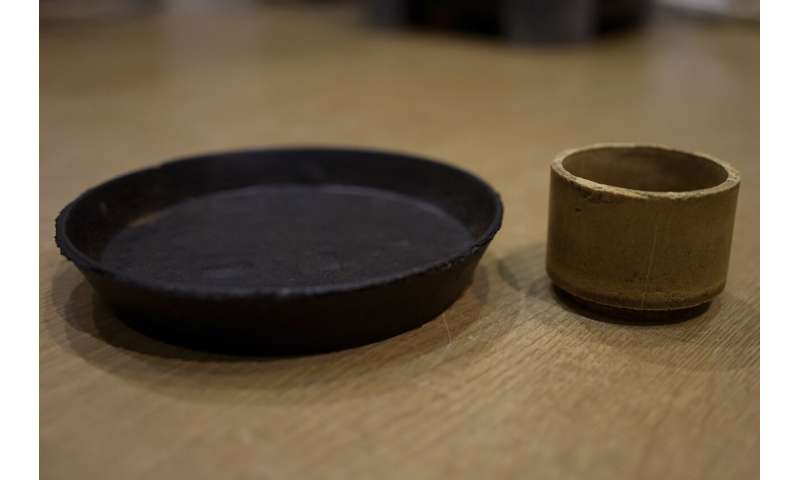
A plate and cup made from food cement are seen at the University of Tokyo laboratory in Tokyo May 26, 2022. University researchers Kota Machida and Yuya Sakai have developed a technology that can turn food waste into “cement” for use in construction. :AP Photo/Chisato Tanaka
-
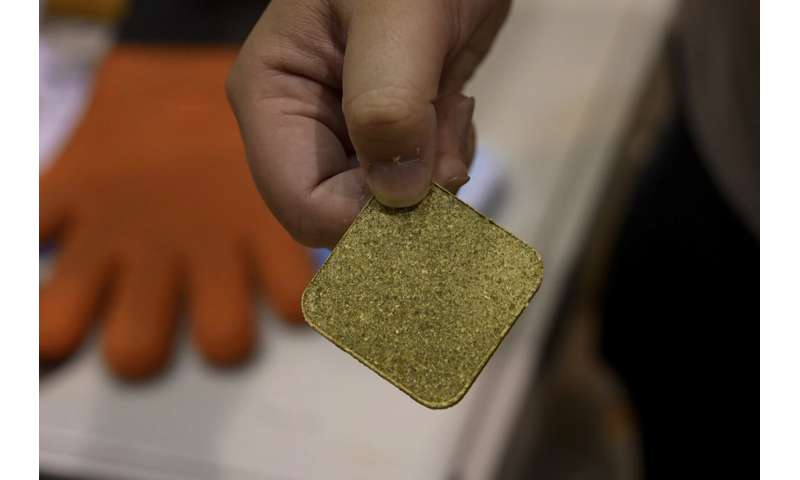
Food cement made from dried cabbage is seen on May 26, 2022 at the University of Tokyo laboratory in Tokyo. University researchers Kota Machida and Yuya Sakai have developed a technology capable of turning food waste into “cement” for construction. Credit: AP Photo/Chisato Tanaka
To make the cement waterproof and protect it from rodents and other pests, it can be coated with Japanese lacquer.
Food waste is a huge problem in Japan and around the world. Japan produced around 5.7 million tonnes of edible food waste in 2019 and the government aims to reduce this figure to around 2.7 million tonnes by 2030.
Machida started a company called Fabula inc. last year with two of his childhood friends. They work with other companies to make food cement cups, cutlery and furniture.
Sakai says the process could be used to make edible makeshift housing in the event of a disaster.
-
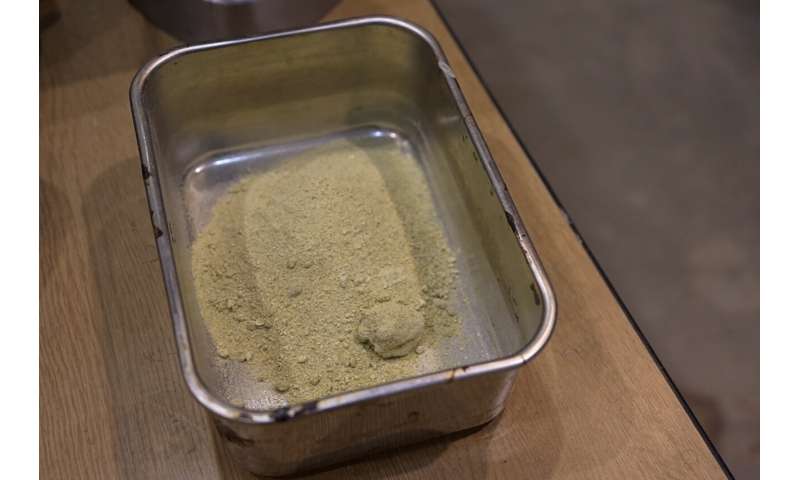
Dried cabbage particles that have been pulverized in a blender are seen at the University of Tokyo laboratory in Tokyo, May 26, 2022. University researchers Kota Machida and Yuya Sakai have developed a technology that can transform waste food into “cement” for construction Credit: AP Photo/Chisato Tanaka
-
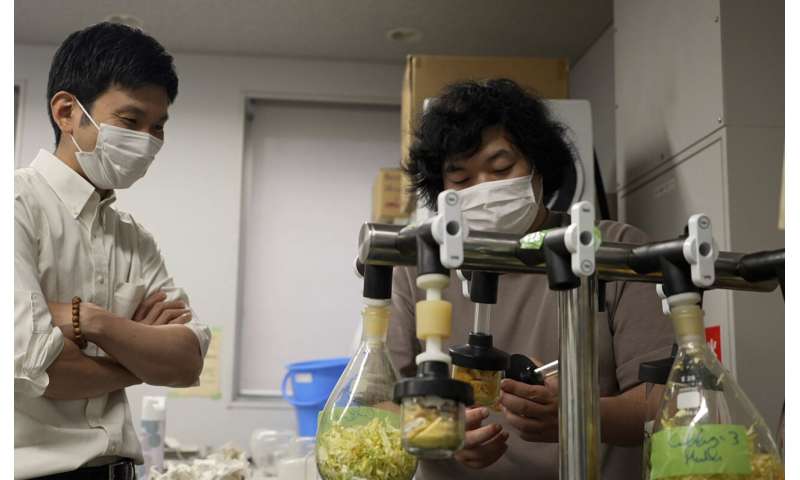
University of Tokyo researchers Yuya Sakai, left, and Kota Machida, right, check dried vegetables and fruit peels before pulverizing them into particles at their university laboratory in Tokyo, May 26, 2022. The researchers academics have developed a technology that can turn waste food into “cement” for construction. Credit: AP Photo/Chisato Tanaka
“For example, if food can’t be delivered to evacuees, they could eat makeshift beds made of food cement,” he said.
Food grade cement is reusable and biodegradable, so it can be buried when no longer needed.
“Our ultimate hope is that this cement will replace plastic and cement products, which have worse environmental impacts,” Machida said.
© 2022 The Associated Press. All rights reserved. This material may not be published, broadcast, rewritten or redistributed without permission.
Quote: Food waste cement: A gingerbread house-style building option (June 1, 2022) Retrieved July 6, 2022 from https://techxplore.com/news/2022-06-food-cement-gingerbread-house-style-option.html
This document is subject to copyright. Except for fair use for purposes of private study or research, no part may be reproduced without written permission. The content is provided for information only.

